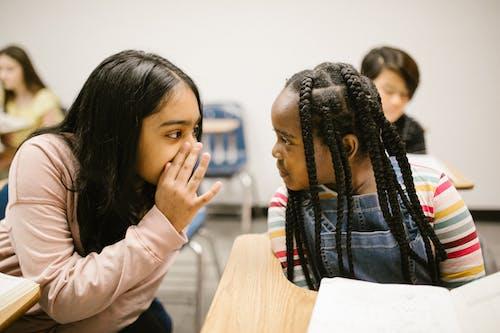
Introduction
Youth violence is a complex and pressing issue that affects communities worldwide. It encompasses a wide range of behaviors, from physical aggression and bullying to more severe acts such as gang violence and firearm-related crimes. Understanding the root causes, consequences, and potential solutions for youth violence is crucial for the well-being of our younger generation and society as a whole. Let’s explore themultifacetednature of youth violence and discuss strategies to prevent and address this pressing concern.
Defining Youth Violence

Youth violence typically refers to aggressive behaviors displayed by individuals aged 10 to 24 years. It encompassesvariousforms of violence, including physical, sexual, and psychological aggression. These actions can manifest as bullying, fights, assaults, domestic violence, gang-related violence, and even homicide. Understanding these diverse manifestations is essential for developing effective prevention and intervention strategies.
The Root Causes of Youth Violence

Socioeconomic Factors: One of the most significant contributors to youth violence is socioeconomic disparity. Young people growing up in impoverished neighborhoods with limited access to education and employmentopportunitiesoften face frustration and hopelessness. This sense of despair can lead them to seek alternatives, which may involve violence as a way to cope with their circumstances. Addressing economic disparities and creating pathways to success for all can significantly reduce the appeal of violent behaviors.
Family Dynamics: Dysfunctional family environments play a critical role in shaping a young person’s behavior. Children exposed to neglect, abuse, or a lack of parental guidance may lack the necessary emotional support and coping mechanisms to deal with their emotions and challenges in a healthy way. This can result in aggression as a response to their tumultuous family life. Programs that offer support for families, counseling, and parenting resources are essential in mitigating this cause.

Peer Influence: The influence of peers cannot be underestimated in the development of youth violence. Peer pressure and affiliations with delinquent friends or gangs often push young individuals toward aggressive actions. To fit in or gain a sense of belonging, they may engage incriminalactivities, acts of violence, or vandalism. Fostering alternative, positive peer groups and providing mentorship programs can help guide youth toward healthier choices.
Mental Health and Substance Abuse: Mental health issues and substance abuse problems are closely linked to youth violence. Young individuals grappling with depression, anxiety, or other mental health challenges may struggle to control their impulses and manage their aggression. Likewise, substance abuse can exacerbate violent tendencies. Early identification of mental health issues and access to appropriate treatment can significantly reduce the risk of violent behavior among young people.

Community Factors: The environment in which young individuals grow up plays a vital role in their development. Communities plagued by high crime rates, easy access to firearms, and a lack of positive recreational opportunities can inadvertently promote violence. Investing in safe and engaging community spaces, as well as implementingstrictergun control measures, can reduce the potential for youth violence.
The Consequences of Youth Violence

Physical and Psychological Trauma: One of the most immediate and apparent consequences of youth violence is the physical and psychological trauma experienced by both victims and perpetrators. Victims suffer not only from physical injuries but also long-lasting emotional andpsychologicalscars. The pain, suffering, and anguish resulting from these experiences can lead to conditions such as post-traumatic stress disorder (PTSD) and anxiety, impacting the individual’s well-being for years to come.

Academic and Social Implications: Youth involved in violence often experience profound academic setbacks. The stress and distractions of violent behaviors can lead to reduced educational attainment and limited career opportunities. Consequently, these individuals face a future with fewer prospects, lower earning potential, and reduced socioeconomic mobility. Moreover, the consequences of youth violence extend into the social sphere, as it may result in social isolation, stigmatization, and reduced social integration. Young people involved in violence are often shunned or marginalized by their peers, making it challenging to break free from the cycle of violence.

Legal Repercussions: Engaging in violent behavior can result in significant legal consequences. Youth who commit violent acts may find themselves entangled in the criminal justice system, leading to incarceration, probation, or other legal penalties. In some cases, they acquire criminal records, which can hinder future prospects in education, employment, and housing. The consequences of acriminalrecord can perpetuate a cycle of violence, as it limits the opportunities for rehabilitation and reintegration into society.

Public Health and Societal Impact: Youth violence is not confined to individuals and their immediate circles. Its ripple effects extend to society at large, imposing substantial costs on public health systems, social services, and law enforcement agencies. Resources are allocated to address the physical and mental health needs of victims, provide legal support, and manage the consequences of violence. As a result, youth violence contributes to the already overburdened juvenile justice system and places additional strains on public resources.

Prevention and Intervention Strategies
- Education and Awareness
- Comprehensive, evidence-based violence preventionprogramsin schools and communities can help educate youth about the consequences of violence.
- Encouraging empathy and communication skills can reduce aggressive behaviors.
- Supportive Family Environments
- Strengthening family bonds and providing parents with resources for positive parenting can mitigate the risk of youth violence.
- Parenting programs that focus on communication and conflict resolution can be effective.

- Mentoring and Positive Role Models
- Mentoring programs can connect at-risk youth with positive role models who guide them away from violent behaviors.
- Strong community involvement is vital in offering support and opportunities.
- Mental Health and Substance Abuse Services
- Expanding access to mental healthservicesand addiction treatment for youth is critical.
- Early identification and intervention for mental health issues can prevent violence.

- Gun Control Measures
- Stricter gun control regulations can help reduce firearm-related youth violence.
- Implementing measures such as background checks and safe storage laws can save lives.
- Conflict Resolution and Mediation
- Teaching conflict resolution skills can enable youth to managedisputesnonviolently.
- Mediation programs can resolve conflicts within schools and communities.
Final Thoughts

Youth violence is a multifaceted issue with far-reaching consequences for individuals and communities. Addressing this problem requires a holistic approach that considers socioeconomic factors, family dynamics, peer influence, mental health, and substance abuse. By implementing prevention and intervention strategies such as education, support for families, mentoring, mental health services, and gun control measures, we can make significant strides in reducing youth violence. Our collective efforts can create safer, more nurturing environments for our youth, ensuring a brighter future for all. Stay safe and learn more from #1 AAA CE Trainings continuing education training,eetsonline.com/ce.
